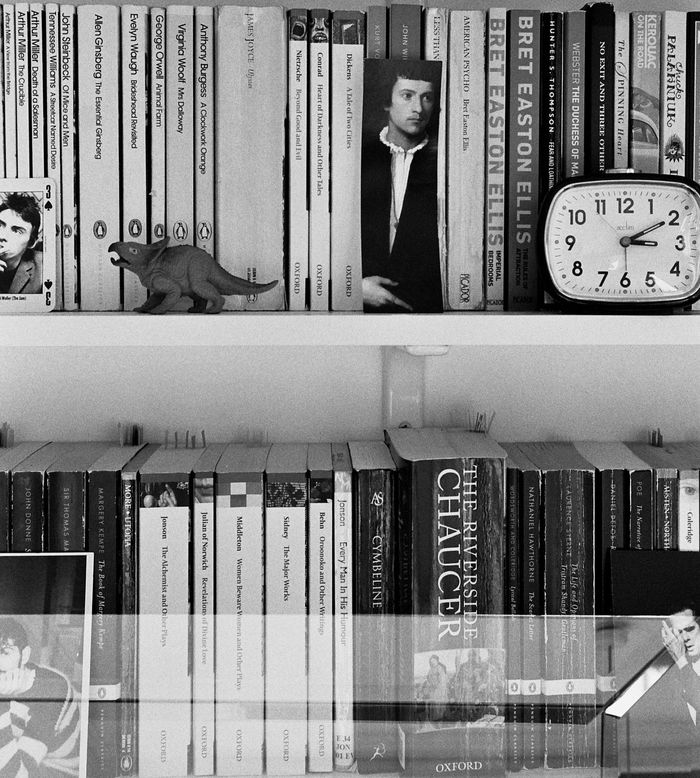The Sitwells, Sagan, and ‘Serious Art’
Archie Hamerton thinks about perceptions of ‘serious’ and ‘unserious’ art across the twentieth century
Edith, Osbert, and Sacheverell Sitwell were, as their names suggest, eccentric siblings. A poet, an art critic, and a music critic respectively, the Sitwells’ place in the art and literary world came to be defined by ostentatious displays of their creativity. They hosted literary salons and live poetry readings, where Edith would dress in fantastical costumes, turbans, furs and jewels, and deliver her poetry through a Sengerphone, set to experimental music. Such melodrama was dismissed as the actions of poseurs by contemporary critics, lampooned mercilessly by Noel Coward and Max Beerbohm, and written off as foppish derivatives of their contemporaries, the Bloomsbury Group.
"The art world consistently insists upon dour seriousness"
It is a criticism that is often used, sneering at those who favour the playful over the sombre: the art world may have deemed the Bloomsburys’ intellectual seriousness ‘high art’, but in Edith’s austerity was something of Woolf; in Osbert’s intellect was something of Strachey; Sacheverell’s solemnity in Bell. They were not simply parodical imitations, but arguably worthy rivals who simply had the creative boldness to embrace camp. The Sitwells’ were largely criticised for their approach, seen as a sort of ‘style over substance’. The art world, perhaps in a desire to fashion itself as a serious competitor to the humanities and sciences, consistently insists upon dour seriousness, deriding playful creatives for deviance.
Though not an obvious mirror—one an aristocratic elderly woman from England, the other a middle class schoolgirl from France—I find Edith Sitwell to be paralleled in Françoise Sagan, the author of Bonjour Tristesse. The languorous beauty and adroit writing of Sagan’s debut novel led the critics to assume the writer must be an older figure, a man preferably, and the notion of a teenage girl writing the book merely a PR stunt. And yet when the truth that Sagan was indeed the writer could be longer ignored, the work they had hall praised before was deemed unserious, precocious, and adolescent. Like Sitwell, it seems Sagan’s persona—a playful enfant terrible—was all it took for the critics to dissociate her from ‘high art’.
"But this notion of high serious art seems to unravel, in light of lockdown"
But this notion of high serious art seems to unravel, in light of lockdown. Amateur art and writing is flourishing, with more people having the time to produce their own work (work a troubling word for art, why not play?), and indeed requiring the introspection or release art can bring. With the Turner Prize cancelled—seemingly replaced by ‘Simple World’ whose Instagram adverts cry out unpretentiously for ‘all creators’—perhaps the snobbery of the art and literary world will lose its footing, opening it up to amateurs and dabblers. To deem art unserious, or vulgar, or frivolous, or any of the jibes launched against playful creatives is not mutually exclusive to good art, as the institution might have us think. Camp and kitsch, for example, are aesthetics that rely quite heavily on the glibness that the critics seem to abhor. They are not pieces of work that have tried and failed to be ‘high art’, but works that successfully intended to exist as flippant. As Sitwell herself said, ‘I have always been in bad taste, and glory in it’. I believe critics somewhat fear playful art as it somewhat negates their purpose: criticism is an attempt to render art academic, ‘art as play’ doing quite the opposite.
In lockdown, this has seemed to manifest itself most prominently in the success of Channel 4’s, Grayson’s Art Club, a charming weekly hour of TV that looked almost entirely at the art produced by amateur creatives and celebrity guests (all episodes on All4 until the start of July, I highly recommend) This sort of public ‘show-and-tell’ blends seamlessly with the work that Grayson and Phillipa have created at in their studio, driving homethe notion that all art, whether created by critically approved artists or ordinary people, has an innate value. Indeed, Perry’s art, and indeed his show, have a comforting sense of fun. The totemic sculpture he creates throughout the series, of his childhood toy Alan Measles, is a piece with an innate tender playfulness, in its figuration of a stuffed bear, and its purpose as a sort of protective golem. Watching Perry potter about his studio, discuss art with Phillipa, Zoom call amateur creatives, and play with his cat, allows the two worlds of high art and play to amalgamate. The curtain, upon which the art world seems to insist, is pulled back by the Perrys; the elitist mystique, in which critics lead us to believe, dissipated. I believe Joe Lycett, one of Perry’s celebrity guests, put it best, in the finale of the show: ‘The art world has felt serious and heavy and not for the likes of us…but it’s for everyone and being funny and for being silly, for play’.
 News / Downing investigates ‘mysterious’ underground burial vault 29 December 2025
News / Downing investigates ‘mysterious’ underground burial vault 29 December 2025 News / Unions protest handling of redundancies at Epidemiology Unit30 December 2025
News / Unions protest handling of redundancies at Epidemiology Unit30 December 2025 Lifestyle / Ask Auntie Alice29 December 2025
Lifestyle / Ask Auntie Alice29 December 2025 Features / ‘Treated like we’re incompetent’: ents officers on college micromanagement30 December 2025
Features / ‘Treated like we’re incompetent’: ents officers on college micromanagement30 December 2025 Science / Astronomical events to look out for over the break29 December 2025
Science / Astronomical events to look out for over the break29 December 2025










